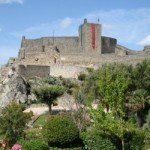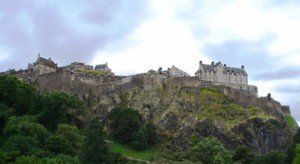Top 7 Paradores in Spain: Stay in Castles, Palaces and Monasteries
Posted by: kirsty_wilson in Europe, tags: Accommodation, Architecture, Castles, Palaces, SpainThe delights of the Spanish Paradores
Road trippers and nature lovers shouldn’t leave the Spanish Paradores off their must-see travel list. The Paradores are important historic buildings across the country and are cultural and architectural remnants of the Roman Empire, Arab, and Germanic rule. Once the location of great battles and home to some of the greatest kings, today these great palaces, hospitals, and monasteries have been transformed into comfortable, even luxurious hotels for visitors from all over the world. For a feel of Spain through the ages, live in history and sleep in style in one of these fascinating and awe-inspiring structures. Here’s our pick of seven of the best!
Parador de Zafra, Extremadura
Housed in a huge castle which belonged to the Duchess of Feria in 1437 is today a flourishing 4-star hotel called Parador de Zafra. The hotel is located in the province of Badajoy, in the town center of Zafra. Near the Parador de Zafra lies the famous Santa Maria church. The luxurious interior of this huge hotel is guarded by nine crenels. The hotel still sports iron mounting, coffered ceilings, and other small decorative items which have survived the centuries.

Parador de Lerma, Castle Leon
Originally the Ducal Palace, it was built on the foundations of an old castle which dated back to the 15th century. Today this Palace, designed by Francisco de Mora and built in the early half of the 17th century by King Philipp III is the Parador de Lerma. This 4-star hotel has 70 guestrooms, of which no two rooms are alike, differing depending on their location within the castle. The stone floors, antiques and slanted wood still feel as they did five centuries ago.

Parador de Santo Estevo, Galicia
The Parador de Santo Estevo was originally called the Benedictine Monastery located in the north of Ourense in Galicia. It can be found near the Spanish town of Nogueira de Ramuín almost close to the edge of a canyon which is surrounded by lush green and wooded mountains which look like a scene out of the history books. This hotel has a total of 77 rooms of different sizes both with and without private living rooms. The rooms have been remodeled and designed to a more contemporary yet luxurious style.

Parador de Plasencia, Extremadura
The Parador de Plasencia is located in the middle of the ancient Spanish town of Plasencia. Architecturally rich, this building can be found near the Portuguese border. This 15th century monastery houses a four-star hotel with countless halls, gothic type façade, open air pool and 66 beautiful guestrooms. Each of the rooms features high ceilings and natural stone walls which create a romantic and comfortable atmosphere. Oriental carpets, baldachins and baroque sofas add to the feeling of comfort and luxury of staying here.

Parador de Jarandilla de la Vera, Extremadura
Located in the Cáceres province in an old village named Jarandilla de la Vera – which is 230 km away from the Spanish capital of Madrid – the Parador de Jarandilla de la Vera was once home to the Holy Roman Emperor, Charles V and the king of the Spanish Empire. This castle – dating from the 15th century – has lost none of its charm and superior presence over the centuries. Still guarded by fortified towers, wooden rafters, and huge open fireplaces, it’s a must visit for every tourist. The comfortable, beautiful and open rooms give visitors a feeling of freedom.

Parador de Oropesa, Castile La Mancha
The Parador de Oropesa was once a 14th century castle and housed nobles, dukes of Oropesa and many clergymen over the centuries. The 4 star hotel can be found in the fertile valley near the Tagus River. Today it features a romantic atmosphere with pool, stylish interior and 14th century charm. The large and impressive mosaic floors, watch tower and an underground arched cellar just adds to the unique experience. Each room has been furnished with upholstered furniture, decorative lamps, comfortable and spacious rooms. This Parador still maintains an atmosphere that resembles Castilian aristocratic tradition.

Parador de Monforte de Lemos, Galicia
Located in Galicia, the Parador Monforte de Lemos is a huge monument and consists of San Vicente del Pino monastery, fortified tower, and the Duke’s palace. This impressive piece of architecture embodies various styles of epochs from the time of the Middle Ages right down to the 18th century. Each guestroom here is unique and has a special charm which is a mix of both old and new lifestyles. The huge, bright and well decorated rooms are comfortable and inviting.

Guest contribution from Escapio.com where these historic hotels in Spain are just a handful of the luxury, boutique and design hotels perfect for a long holiday or a weekend break.

 Pau is 50km from the Pyrenees in southern France and stands on a 200m elevation, making it the perfect travel destination for splendid views to the Pyrenees from the Boulevard des Pyrenees. Alphonse de Lamartine said: “Pau has the world’s most beautiful view of the earth just as Naples has the most beautiful view of the sea.”
Pau is 50km from the Pyrenees in southern France and stands on a 200m elevation, making it the perfect travel destination for splendid views to the Pyrenees from the Boulevard des Pyrenees. Alphonse de Lamartine said: “Pau has the world’s most beautiful view of the earth just as Naples has the most beautiful view of the sea.”




 Entries (RSS)
Entries (RSS)